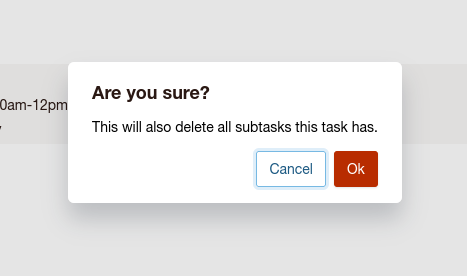As I use webcomponents more, I found myself wanting a way to define the HTML for webcomponents with a non-trivial amount of light DOM contents in a more reusable programatic way. So far, I’ve found that modelling webcomponents as template fragments is a reasonably ergonomic solution. It enables usage such as:
When re-building docket with htmx, I wanted to retain the confirm dialog experience I had with react. Instead of taking on a dependency for this, I chose to build my own combining HTMX and Webcomponents. The resulting UX feels snappy and similar to a client rendered experience. My end result looks like this:

After updating docket to use htmx, I wanted to share my experience. First and most important, HTMX is more than just a client side framework. Instead of using a JavaScript library to render your application in the browser, you have incrementally load HTML as your application’s state changes.
